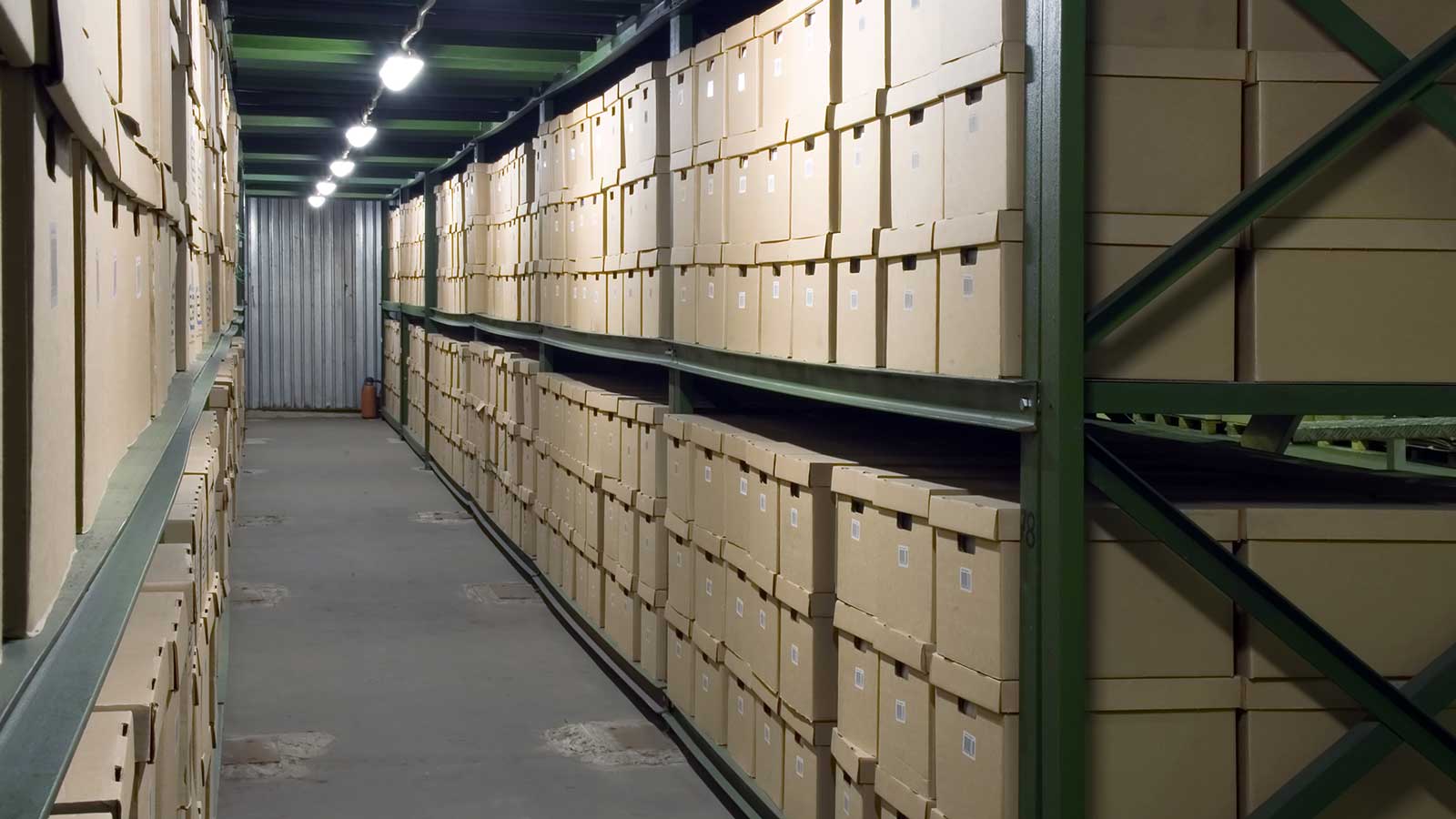How Scanning Services Enhance Business Continuity Plans
Table of contents
Business continuity planning is an essential strategy for all sectors, but for architectural firms and construction companies, it's crucial. These industries rely heavily on project documentation, blueprints, and records that are often voluminous and challenging to manage. The importance of these documents cannot be overstated, as they are the backbone of project planning, execution, and preservation. In the wake of challenges such as natural disasters, fire, or loss, the traditional reliance on physical documentation presents a substantial risk. Herein lies the significance of digital transformation—specifically, document scanning services. This technological shift is not just a trend but a pivotal strategy to enhance business continuity plans. It ensures that critical information remains accessible, secure, and easily shareable among key stakeholders.
In the architectural and construction sectors, the value of maintaining comprehensive and accessible project documentation cannot be overstated. These records, from detailed blueprints to extensive project plans, form the foundation upon which projects are built, executed, and referred back to for future modifications or expansions. However, this reliance on physical documents exposes firms to significant risks. Natural disasters, fires, or even simple misplacement can result in the irreversible loss of critical information, leading to costly delays, legal complications, and a tarnished reputation.
Risks associated with the reliance on physical documentation are manifold. A fire or flood can obliterate years of work in an instant, while theft or loss can compromise the integrity of a project. Moreover, physical documents are difficult to share among stakeholders, creating bottlenecks that can delay project timelines. These risks underscore the importance of incorporating robust business continuity practices that include measures to safeguard these valuable documents.
Transitioning to digital documentation through document scanning services emerges as a compelling solution to these challenges. By digitizing records, architectural firms and construction companies not only protect their assets from physical damage but also enhance the efficiency and accessibility of their information management practices.
Understanding Scanning Services
Document scanning services are at the forefront of digital transformation, providing a bridge from the tangible to the digital. These services convert physical documents into digital formats, ensuring that critical project information, from blueprints to contractual agreements, is preserved, accessible, and easily manageable. The process involves high-resolution scanning to capture the intricate details of each document, followed by indexing and storing the digital files in a secure, searchable database.
For architectural firms and construction companies, the types of documents that can be digitized are vast. Industry-specific examples include:
- Blueprints: High-detail drawings that outline the design and specifications of buildings and structures.
- Project Plans: Comprehensive documents detailing the schedule, resources, and management of construction projects.
- Contracts and Agreements: Legal documents outlining the responsibilities and expectations of all parties involved in construction projects.
- Compliance Documents: Records ensuring that projects adhere to local, state, and federal regulations.
Digitizing these documents not only safeguards them from physical damage but also streamlines workflows, making it easier for teams to access, share, and collaborate on projects.
Enhancing Business Continuity with Scanning Services
Incorporating scanning services into business continuity plans offers architectural firms and construction companies a multifaceted strategy to mitigate risk and enhance operational efficiency.
Immediate Access
Digital documents are accessible from anywhere, at any time. This ensures that key personnel can access critical information without the limitations imposed by physical document storage, facilitating prompt decision-making and continuity of operations, even in the face of disruptions.
Data Protection
Digital documents can be backed up in multiple locations, encrypted, and protected with advanced cybersecurity measures. This redundancy ensures that even if one copy is compromised, duplicates remain untouched, securing the company's informational assets against cyber threats, physical damage, and loss.
Collaboration and Sharing
Scanning services transform the way architects, contractors, and clients collaborate. By providing shared access to documents, stakeholders can review, edit, and update project details in real-time, fostering a more dynamic and interactive project management process. This not only speeds up the project lifecycle but also enhances the accuracy and quality of the work produced.
Incorporating scanning services into a business continuity plan is not merely an operational upgrade; it's a strategic investment in the resilience and efficiency of the business. Next, we'll explore real-world applications and benefits through case studies.
Case Studies/Examples
Case Study 1: Global Architectural Firm Enhances Project Delivery
A global architectural firm faced challenges in managing its vast repository of physical blueprints and project documents, leading to inefficiencies and increased risk of data loss. By integrating document scanning services into their business continuity plan, they transitioned to a digital documentation system. This move not only safeguarded their documents against natural disasters and loss but also streamlined project delivery. With digital access, project teams across different continents collaborated in real-time, reducing project completion times by 30% and enhancing client satisfaction.
Case Study 2: Construction Company Overcomes Disaster
A mid-sized construction company specializing in residential buildings experienced a fire that destroyed their main office, including the physical storage of project documents. Fortunately, they had recently digitized their records, including blueprints and client contracts, as part of their enhanced business continuity plan. This foresight allowed them to quickly recover from the disaster, with minimal project delays and no data loss, demonstrating the tangible benefits of digital transformation in crisis situations.
Case Study 3: Enhanced Data Security and Compliance
A construction company faced challenges with data security and regulatory compliance due to the sensitive nature of its projects. By adopting document scanning services, they were able to encrypt and securely store digital documents, ensuring compliance with industry regulations and enhancing data security. The transition also facilitated easier audits and compliance checks, saving the company time and reducing the risk of penalties.
These case studies illustrate the significant advantages that scanning services can offer in enhancing business continuity plans. By digitizing documents, companies can ensure greater resilience against disasters, improve operational efficiency, and secure sensitive data.
Implementing Scanning Services in Your Business Continuity Plan
Incorporating document scanning services into your business continuity strategy requires a thoughtful approach. Here's a step-by-step guide to get started:
-
Assessment of Current Document Management Practices: Conduct a comprehensive review of how your firm currently manages documents. Identify key documents that are critical to your operations and assess the risks associated with physical storage.
-
Choosing the Right Scanning Services Provider: Look for providers with a strong track record in handling industry-specific documents. Consider factors such as their security measures, experience, and the technology they use for scanning and storing documents.
-
Planning for the Transition: Develop a plan for transitioning from physical to digital documentation. This should include timelines, budget considerations, and a strategy for training staff to use the new system.
-
Implementing Security and Backup Measures: Ensure that your digital documents are protected with encryption and stored in secure, backed-up locations to safeguard against data loss.
By following these steps, architectural firms and construction companies can integrate scanning services into their business continuity plans, enhancing their resilience and operational efficiency.
Conclusion
For architectural firms and construction companies, adopting document scanning services is a strategic move towards enhancing business resilience. By transitioning to digital documentation, firms can protect their critical information from physical damage, streamline their operations, and foster better collaboration among stakeholders. The integration of scanning services into business continuity planning is not just a technological upgrade but a pivotal strategy for securing a company's future.
As we move forward in an increasingly digital world, the value of having immediate, secure, and reliable access to critical project documents cannot be understated. Digitization is more than a convenience; it's a safeguard against the unpredictable, ensuring that your business can continue to operate smoothly, even in the face of unforeseen challenges.
Evaluate your current business continuity plan and consider the integration of scanning services to safeguard your documentation and enhance operational efficiency. For more information on how DocCapture's document scanning services can support your business, visit our website. Ready to take the next step? Fill out our "get a quote" form today, and let's ensure your business is prepared for tomorrow.
Share this
You May Also Like
These Related Stories

Reducing Human Error with Digital Mailroom Services

Document Scanning in Crisis Management

